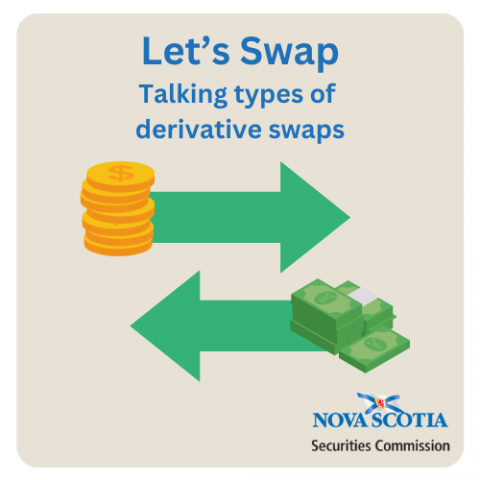Submitted by nsscadmin on

Last week we went over the basics of a form of derivative known as options. Bringing up derivatives led to some other derivative-related questions, specifically around swaps. So, today we’re going to look at three different types of swaps.
Before we talk about different types of swaps let’s quickly review the basics of a swap. A swap is a form of derivative contract in which two parties agree to exchange payments, most commonly involving cash flows. In a cash flow-based swap each side may send cash to the other counterparty depending on the terms of the contract. In some types of swaps, there may be a fixed rate payer and a floating rate payer. Some swaps also use the term “notional amount” which is an agreed upon amount which the swap payments are based upon.
The three types of swaps we’ll be reviewing are interest rate swaps, currency swaps, and commodity swaps.
Interest rate swaps are the most common type of swap. In this case, Party A will agree to pay Party B a fixed rate of interest based upon the notional amount on specific dates for a specific period of time. Party B agrees to make payments based on a variable interest rate to Party A and Party A agrees to make fixed interest payments on the notional amount on the same dates and over the same period of time.
Here’s how that might look.
Party A has taken out a loan from a bank of $100,000 with a variable rate of 2.5%, which can change at any time. To mitigate the risk of this loan, Party A enters into an fixed for floating interest rate swap with Party B.
Party A agrees to pay Party B 3% of the notional amount of $100,000. Party B agrees to pay Party A the variable rate of the notional amount of $100,000. If interest rates were to rise the amount of cash flow Party A receives from Party B increases which would help cover the interest rate increase on the original floating rate loan with the bank.
Currency swaps involve the exchange of interest in one currency for the same in another currency. It is considered to be a foreign exchange transaction and is typically done to hedge long-term investments and changes in interest rate exposure.
In a currency swap the two parties agree in advance if they will exchange the notional amounts of the two currencies at the beginning of the swap. For example, the swap may require the counterparties to exchange £10 million for $15 million CAD. Currency swaps will also require the exchange of interest payments based on the notional amounts exchanged. The interest payments can be structured in various forms such as fixed-for-float, fixed-for-fixed or float-for-float. At the end of the swap the principal amount must be re-exchanged which creates an exchange risk for both sides as the market rate may have changed since the start of the swap.
A Commodity swap is a derivative where two parties agree to exchange cash flows dependant on the price of an underlying commodity. This type of swap is typically used to hedge against price swings in the market for commodities. They allow for the producers of a commodity and the consumer to lock in a set price for that commodity. Due to the large size of commodity swaps, they typically involve large financial institutions and not individual investors.
In a basic commodity swap, there is what is known as a floating-leg component and a fixed-leg component. The floating-leg is tied to the market price of the underlying commodity, and the fixed-leg is an agreed upon price specified in the swap contract.
Typically, the end-user of the commodity will pay the fixed leg of the payment, and the swap dealer or producer of the commodity will receive the fixed price for the commodity. The fixed-leg component is the agreed upon price. The swap dealer will typically be the floating rate payer of the commodity contract for the end-user and the fixed rate receiver to the producer under the contract. The floating rate price will be based on the current or spot market price of the underlying commodity specified in the contract.
In the commodity swap, the consumer of the commodity pays a guaranteed price over a specified period of time hedging against price increases, and the producer is hedging against a decline in the commodity's price over a set period of time. Typically, commodity swaps are cash-settled, that is the swap payments made are the differences between the fixed and floating price times the notional amount at the agreed upon times. However, physical delivery of the commodity can be stipulated in the contract.
